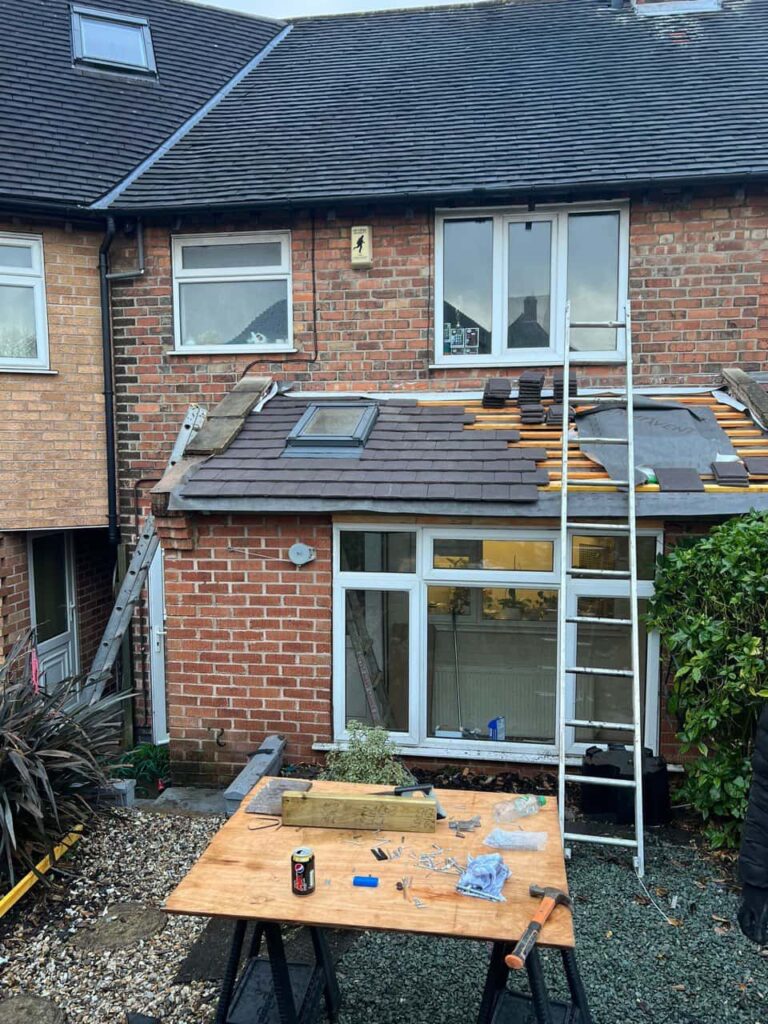Introduction
A well-maintained roof is essential for protecting your home from the elements, but even the strongest tiled roofs can suffer from wear and tear over time. One of the most common issues homeowners face is loose or slipped roof tiles — a problem that may seem minor at first but can quickly escalate into serious damage if not addressed.
At LS Roofing Tring in Tring, Hertfordshire, we frequently inspect roofs where just one or two slipped tiles have led to leaks, damp patches, or structural issues beneath the surface. Understanding why roof tiles become loose or slip is key to preventing costly problems and maintaining the long-term health of your roof.
Why Slipped Tiles Should Never Be Ignored
A slipped tile may look harmless, but it compromises the entire roofing system. Even a small gap can allow rainwater, wind, and debris to penetrate beneath the tiles, damaging the underfelt, battens, and timbers. Over time, this can lead to rot, mould growth, and loss of insulation performance.
By spotting the early warning signs and knowing what causes tile displacement, you can act quickly to keep your roof in strong condition all year round.
Common Causes of Loose or Slipped Roof Tiles
1. Weather Damage
The British climate is a major contributor to tile movement. Heavy rain, strong winds, and storms can gradually loosen fixings and mortar, especially on older roofs.
- High winds can lift tiles slightly, weakening their grip.
- Freeze-thaw cycles cause minor expansions and contractions in the roof structure.
- Persistent rain may wash away small amounts of bedding mortar that helps secure ridge or verge tiles.
In areas like Tring, where weather conditions can change rapidly, regular inspections after storms are a wise preventative measure.
2. Ageing Roof Materials
As roofs age, the materials naturally deteriorate. Nails and clips used to hold tiles in place can rust or corrode, especially on roofs over 20 years old. When fixings weaken, the tiles are no longer properly secured, making them more likely to slip out of alignment.
Clay and slate tiles can also become brittle with age, increasing the risk of cracking or chipping, which further reduces their stability.
3. Poor Installation Practices
Incorrect installation is another major cause of tile slippage. If tiles were not properly fixed to begin with — or if low-quality materials were used — they can easily loosen under the stress of weather and gravity.
Some common mistakes include:
- Inadequate nailing or clipping.
- Using the wrong type of tile for the roof pitch.
- Uneven alignment during fitting.
- Lack of proper underlayment support.
At LS Roofing Tring, we often find that many roof problems stem from shortcuts taken during previous installations or repairs. Professional fitting is always the best way to guarantee long-lasting protection.
4. Movement of the Roof Structure
Roofs are not completely static — they expand and contract slightly with temperature changes. Over many years, this subtle movement can shift the tiles and loosen their fixings.
Additionally, any minor movement in the underlying structure, such as sagging rafters or warped battens, can affect the positioning of tiles, leading to small gaps that grow larger over time.
5. Damage from Foot Traffic or Maintenance Work
While it may seem harmless, walking on a tiled roof can easily disturb or crack tiles. Tradespeople carrying out unrelated work, such as chimney repairs or aerial installations, can sometimes cause tiles to shift unintentionally.
Even a small displacement during maintenance can lead to gaps that let in rainwater — which is why it’s always best to have professionals like LS Roofing Tring handle roofing inspections and repairs safely and correctly.
6. Moss and Debris Build-Up
Moss and algae growth may look minor, but they can cause significant issues over time. Moss retains moisture, which seeps into the small spaces beneath tiles. As it freezes and expands, it slowly forces tiles upward or sideways, loosening their fixings.
Debris from trees — such as leaves and twigs — can also trap water on the roof surface, adding to the stress on the tiles and mortar. Regular cleaning helps prevent these problems and prolongs the life of the roof.
7. Thermal Expansion and Contraction
Extreme temperature changes between seasons can cause tiles and their fixings to expand and contract repeatedly. This continual movement, while minimal on a daily basis, gradually loosens the fixings and displaces the tiles.
In sunny areas or south-facing roofs, this process can accelerate due to prolonged exposure to heat and UV rays.
Signs That Roof Tiles May Be Loose or Slipping
Identifying problems early can save you from more extensive roof repairs later. Watch out for these warning signs:
- Visible gaps or uneven rows of tiles.
- Tiles lying broken or dislodged in the garden.
- Damp patches or stains on interior ceilings.
- Light visible through the roof when viewed from the loft.
- Increased noise from wind entering the roof space.
If you notice any of these signs, it’s important to contact a local expert like LS Roofing Tring to inspect the roof and prevent further deterioration.
Preventing Future Tile Movement
Proactive maintenance is the best way to stop tiles from becoming loose in the first place. Simple steps can make a significant difference:
- Arrange regular roof inspections, especially after storms or high winds.
- Keep gutters clear to prevent water pooling near edges.
- Remove moss and organic debris from the surface.
- Ensure any repairs are carried out by qualified roofing professionals.
Professional roofers can also check for early signs of corrosion, loose fixings, or weakened battens — addressing small issues before they escalate.
Why Professional Repairs Are Essential
Attempting to fix slipped tiles without the right tools or experience can be risky. Working at height requires safety equipment, and even one misplaced step can cause additional damage.
By hiring a reputable company like LS Roofing Tring, homeowners can rest assured that repairs are done safely, correctly, and with attention to long-term durability. Skilled roofers not only replace the slipped tiles but also identify the root cause of the issue, ensuring the problem doesn’t return.
Conclusion
Loose or slipped roof tiles are more than just a cosmetic issue — they’re a warning sign that your roof’s protective layer is compromised. From weather exposure to poor installation or natural ageing, many factors can contribute to tile movement.
For homeowners in Tring and across Hertfordshire, LS Roofing Tring provides professional inspections, maintenance, and repairs to ensure your roof remains watertight and secure. By addressing loose tiles early, you’ll protect your home, improve safety, and extend the life of your roofing system for years to come.
Call us on: 01442 504 695
Click here to find out more about LS Roofing Tring
Click here to complete our contact form and see how we can help with your roofing needs.

